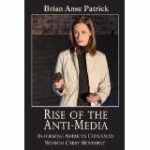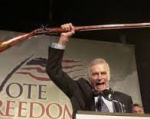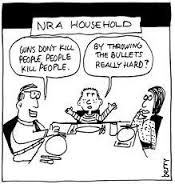The author of this book, Brian Anse Patrick, has given us a work which deserves to be discussed and read. In the interest of full disclosure, I have been engaged in a lively and somewhat combative email discussion with the author, but our disagreements in no way detract from the seriousness and value of his work. So let’s see what he has to say.
The book is a very detailed history of how CCW laws were expanded and revised beginning in the late 1980’s with a particular focus on events in Ohio, Michigan and Florida. Patrick places these developments within a broader historical recounti ng of concealed-carry laws and practices from before the Civil War up through present-day events, noting that much of the pressure for change came from a new gun ‘culture’ that embraced the use of guns for self-defense, thus displacing the more traditional gun culture which was all about hunting and outdoor sports.
 The energy and activity that brought about the acceptance of CCW, according to Patrick, came largely from grass-roots, voluntary associations of gun owners who shared information, strategies and tactics through what the author calls “anti-media” channels that received and transmitted information horizontally via the internet rather than utilizing top-down resources which reflected establishment, anti-CCW views. The push for CCW not only had to overcome the usual anti-gun prejudices of the political establishment, but also forced mainstream gun organizations like the NRA to abandon what had been a traditional reluctance to promote concealed-carry within their own ranks.
The energy and activity that brought about the acceptance of CCW, according to Patrick, came largely from grass-roots, voluntary associations of gun owners who shared information, strategies and tactics through what the author calls “anti-media” channels that received and transmitted information horizontally via the internet rather than utilizing top-down resources which reflected establishment, anti-CCW views. The push for CCW not only had to overcome the usual anti-gun prejudices of the political establishment, but also forced mainstream gun organizations like the NRA to abandon what had been a traditional reluctance to promote concealed-carry within their own ranks.
This is hardly the first time that Americans have come together on a voluntary basis to share information and develop or implement strategies for making the general public more aware of an issue that was of paramount importance to them. Nor is it unusual for such horizontally-structured movements to then be subsumed and incorporated into the larger, top-down groups and organizations that later decide to take up the same cause. There wasn’t a single college campus that didn’t have an anti-war group, SDS for example, long before the mainstream media, liberal labor unions and the Democratic party discovered there was a place named Viet Nam. These campus groups (I was a member of one such group in 1963) didn’t trust the established media and used very unorthodox and largely unseen methods to maintain contact and build a national anti-war movement that only was embraced by the general public following the Tet offensive in 1968.
Patrick does an excellent job of explaining and documenting the effectiveness of such voluntary groups in the push to create legal and social acceptance of CCW. Where he and I part company, however, is in his effort to vest in these voluntary CCW associations a greater awareness and accurate knowledge about guns and the wider world simply because they communicate through informal, horizontal channels and do not rely on the artificially-packaged, frequently erroneous world views of top-down media and corporate points of view. He too often assumes that just because people gain their information from sources that have not been tainted by the mainstream media, that this makes their information more correct. Many of these people, for example, were absolutely convinced that the retail ammunition shortages experienced after Sandy Hook were symptoms of an Obama-led conspiracy to keep gun owners from being able to defend themselves with their guns. Patrick also spends a little too much effort constructing and then demolishing the straw horse known as the liberal bias against guns. Do we need yet another author to argue that liberals and guns rarely, if ever mix?
Yesterday I received my now-daily email from the NRA’s Chris Cox begging me to push some money his way for the 2014 Congressional campaign. From the way he talks you would think that Armageddon will occur if the election map on November 5 isn’t colored bright red. The NRA goes to great lengths to make gun owners believe they are members of the country’s most persecuted minority but Patrick’s recounting of how CCW has spread across the land undercuts that point of view. The NRA would probably make a lot more friends in the non-gun community if it would simply admit the truth, which is that the battle for CCW is largely over and it’s time to move on to better things.





Recent Comments